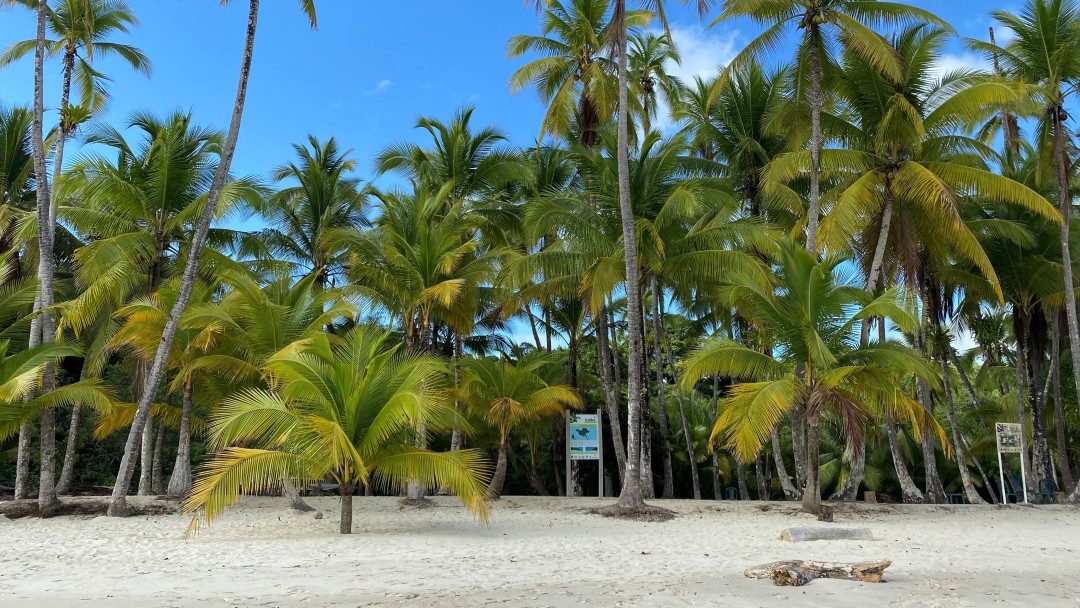News from 2023-05-04 / KfW Development Bank
Preserving biodiversity in the Eastern Tropical Pacific
Regional environmental fund PACIFICO promotes sustainable resource use
Many people on the coasts of Costa Rica, Ecuador, Colombia and Panama live off the marine resources, whether through fishing or tourism. But the Eastern Tropical Pacific is threatened, for example by overfishing, pollution and climate change. On behalf of the German Federal Government, KfW is supporting the conservation of marine biodiversity in this region with EUR 10 million. The agreement was signed together with the project partner PACIFICO in May 2023.

The Eastern Tropical Pacific is one of the world's biodiversity hot spots. The green sea turtle and the scalloped hammerhead shark, which are extinct elsewhere, can still be found here. Both the diversity of species and the number of representatives of each species is high. Whales migrate here along their migration routes. The Eastern Tropical Pacific is also important for fishing, for example due to the occurrence of the tuna, an important edible fish. Around 37 million people in the coastal regions derive their income directly or indirectly from marine resources.
Overfishing and illegal fishing
Biodiversity in the Eastern Tropical Pacific is threatened by illegal, unsustainable fishing and overfishing. The use of illegal or harmful fishing gear, for example, generates large amounts of bycatch. Protected species are also affected. Illegal fishing in marine protected areas prevents stocks from recovering quickly enough. Yet the four countries bordering the Tropical East Pacific - Costa Rica, Ecuador, Colombia and Panama - have already designated several marine protected areas with a combined area of over 600,000 square kilometres. This means that they are already reaching the target set in several international agreements to place at least 30% of marine areas under protection by 2030.
The problem is complex: the marine protected areas have so far been insufficiently monitored. Some of the administrations lack equipment and resources. Moreover, the individual protected areas tend to operate in isolation from each other and are thus unable to effectively protect the marine life that moves in and between them. In addition, cooperation with other actors, including the private sector, must be strengthened in order to conserve and sustainably use marine resources.
Resource conservation at regional level
On behalf of the German Federal Ministry for Economic Cooperation and Development (BMZ), KfW is providing EUR 10 million to the regional environmental fund PACIFICO. This is the first joint project. The fund organises calls for proposals and selects projects, which it supports with up to EUR 1 million. To strengthen regional cooperation, eligible individual projects must relate to at least two of the four participating countries. They thus complement KfW's bilateral environmental protection projects in Ecuador and Colombia. What is more, the ministries of the environment of the four participating countries will also be involved in the project through their collaboration in the "Corredor Marino del Pacífico Este Tropical" (CMAR). CMAR will be involved in the implementation of the project as a political partner and will interact closely with the fund.
Joining forces
The PACIFICO fund, established in 2017, brings together the forces of the riparian states for the protection of the Eastern Tropical Pacific to improve conditions for the protection of migratory species, regional cooperation and an enforcement of sustainable fisheries. Around 5,000 people will benefit directly from the projects that PACIFICO is promoting with the support of KfW; indirectly, they will serve all coastal residents. The project thus makes a direct contribution to achieving the UN development goal SDG 14 (Life under Water).

Share page
To share the content of this page with your network, click on one of the icons below.
Note on data protection: When you share content, your personal data is transferred to the selected network.
Data protection
Alternatively, you can also copy the short link: https://www.kfw-entwicklungsbank.de/s/enzBWrMC.C57A
Copy link Link copied